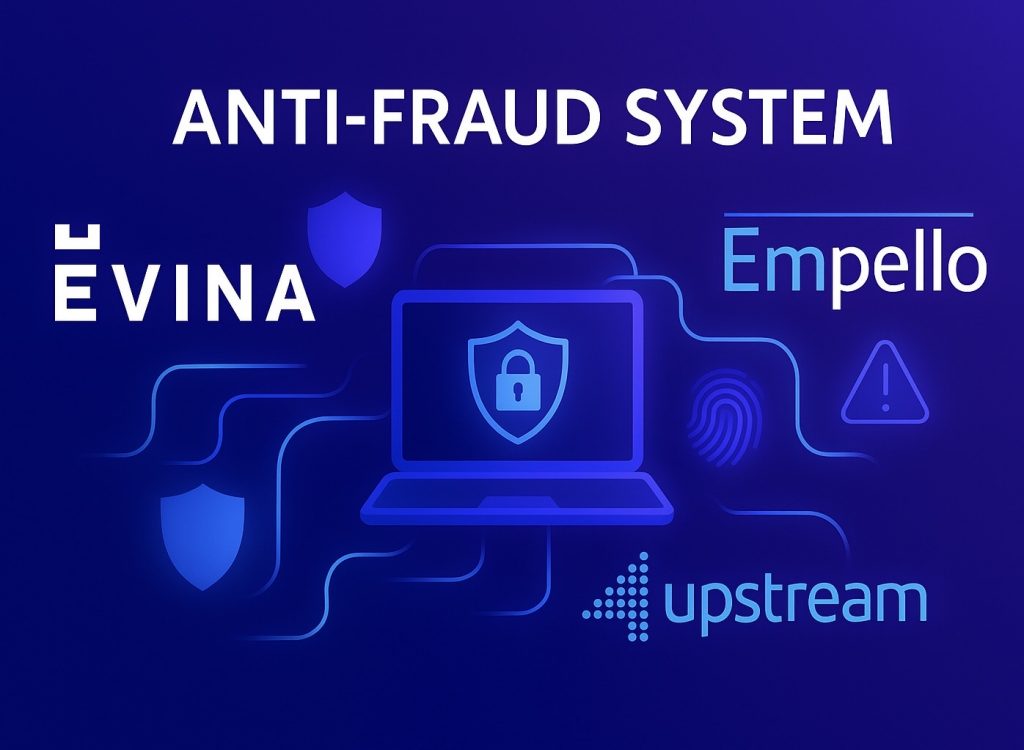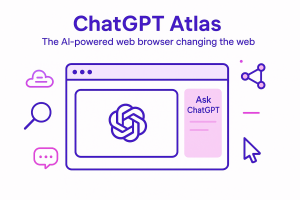Affiliate marketers operating in the mobile subscription (mobile content or Direct Carrier Billing) space face a lucrative but fraud-prone ecosystem. Fraudsters target every link in the chain – end-users, affiliate campaigns, merchants, and carriers – with schemes that can silently siphon revenue and erode user trust . This article explains how fraud affects mobile subscription flows, why robust anti-fraud tools are essential, and compares major anti-fraud systems (like Evina, MCP Insight, Empello, Upstream Secure-D, and others) that help keep campaigns clean. We’ll also cover common fraud tactics, real-world examples, and tips for choosing the right solution. The tone is informative (not overly formal), aiming to help affiliate marketers understand and act on the importance of anti-fraud measures.
The Impact of Fraud on Mobile Subscription Campaigns
Mobile subscription offers – where users subscribe to digital content or services billed via their carrier – are prime targets for fraud. The effects of unchecked fraud ripple across the entire industry:
• Revenue Loss for Advertisers & Affiliates: When advertisers receive fraudulent traffic, their offers don’t achieve a return on investment, causing them to lose money . Affiliates then face lowered payouts or program cuts as advertisers try to recoup losses. In essence, fake subscriptions and clicks drain marketing budgets that should be rewarding genuine conversions. One industry report noted that 93% of mobile transactions in a study were flagged as fraudulent, representing billions in potential unwanted charges if left unchecked . Clearly, without intervention, a huge portion of ad spend can be wasted on fake activity.
• Damaged User Trust and Complaints: Fraudulent mobile subscription charges (e.g. users finding themselves subscribed to a service without consent) quickly erode consumer trust. End-users often do not notice small unwanted charges immediately, or they find it burdensome to seek refunds . When they do realize, they blame the carrier or service provider for the bad experience. This leads to spikes in complaints, refund demands, and negative sentiment. For example, anti-fraud experts note that when fraud is rampant, complaint rates rise and brand reputation suffers, undermining the entire mobile content ecosystem . Conversely, companies that implemented anti-fraud saw cleaner traffic and reduced complaint rates, improving customer experience .
• Risk of Regulatory Action: Carriers and merchants bear the brunt of consumer complaints about fraudulent subscriptions. In markets worldwide, telecom regulators keep a close eye on carrier-billed services. A surge in fraud-related complaints can trigger investigations, fines, or even suspension of billing services . Regulators may impose stricter rules (like mandatory two-step confirmations for all subscriptions) that add friction for all users in an attempt to curb fraud . Such measures, while protective, can diminish conversion rates and revenue for legitimate offers. Thus, preventing fraud proactively is critical to avoid unwelcome regulatory attention and keep the channel efficient .
• Market Slowdown and Lower Payouts: In a fraud-ridden environment, everyone becomes more cautious. Carriers may lower revenue share or impose holding periods. Advertisers invest in costly anti-fraud tools or tighten affiliate criteria – expenses that often mean lower payouts to affiliates over time . Fraudulent actors essentially “poison the well” for honest marketers: as one industry blog put it, fraud is a problem for each market member – even unscrupulous affiliates eventually suffer when offers get pulled or rates drop due to fraud . Overall, fraud can stagnate growth in what should be a thriving mobile subscriptions market.
In short, fraud directly steals revenue, increases costs, angers users, and undermines trust in mobile subscription services.
To maintain a sustainable and profitable affiliate campaign, it’s essential to address these threats head-on with effective anti-fraud measures.
Common Fraud Tactics in Mobile Subscription Flows
Fraudsters employ a mix of technical tricks and social engineering to exploit mobile subscription flows (also known as carrier billing or mVAS offers). Below are some of the most prevalent fraud types affiliate marketers should be aware of:
• Click Spam & Click Injection: In affiliate advertising fraud, bad actors generate masses of fake clicks or hijack click events to earn commission illegitimately . Click-spamming (click-flooding) involves software simulating huge volumes of clicks, hoping to produce some credited conversions. Click-injection is more insidious – malware waits until a real user is about to install an app or complete a subscription, then injects a fraudulent click just in time to claim credit . These tactics make it seem like real users engaged with an offer, whereas the affiliate or sub-publisher is actually fabricating the engagement.
• Device Farms and Bot Traffic: Fraudsters may use device farms – hundreds of physical or virtual devices – or bot networks to mimic user actions at scale . These systems can generate fake subscription sign-ups, OTP requests, or clicks en masse, all appearing to come from different devices. Advertisers see what looks like high traffic and conversions, but it’s orchestrated fraud. Bots can even bypass captcha or OTP protections in some cases, using scripts or stolen device information . Without anti-fraud detection, device farm traffic can quickly drain an affiliate budget while delivering zero real customers.
• Invisible Subscription Triggers (Clickjacking & iFrame Injection): A common form of technical DCB fraud is to trigger subscriptions without the user’s informed consent. Fraudsters achieve this through methods like clickjacking – intercepting a user’s click on a seemingly innocent button or link and redirecting it to a hidden subscription prompt . Similarly, iFrame masking loads the carrier billing page in a hidden frame or layer; a user might click a game or video, not realizing an invisible frame on the page caused a subscription in the background . In effect, the user is auto-subscribed with no clear action on their part, a tactic often executed by malicious scripts or app webviews. This not only defrauds the user and advertiser, but can lead to high refund rates and regulatory ire if widespread.
• Malicious Apps & Malware: Some fraud arrives via malware installed on the user’s own device. Malicious apps can carry payloads that initiate background purchases (carrier billing transactions) without user knowledge . For instance, a user might download what appears to be a legitimate app, but it secretly contains code that subscribes them to premium services. One dramatic example: in 2020, an anti-fraud firm found pre-installed malware on 53,000+ Android phones (a particular model in Africa) that quietly enrolled users in subscription services, consuming their prepaid mobile credits . Such malware (e.g. the xHelper Trojan in that case) operates invisibly, making fraud look like genuine user activity unless a security system blocks it. Upstream’s Secure-D platform, which uncovered that scheme, identified “suspicious activity” on over 200,000 devices from that incident alone – highlighting how pervasive malware-based subscription fraud can be.
• MSISDN Injection & SIM Spoofing: Some sophisticated fraud attacks target the network and device identity. MSISDN injection involves malicious code injecting the user’s phone number into the billing flow to spoof authentication . In normal flows, a user might have to manually enter their number or receive an SMS OTP, but malware can bypass this by directly pushing the number (and OTP if intercepted) to the carrier’s billing request. SIM card spoofing or other forms of identity spoofing are also used – for example, controlling a SIM or its signals to approve charges without the real user’s involvement .
These methods are highly technical, but anti-fraud tools have learned to recognize telltale signs (like impossible user agent patterns or transactions coming from known bad device IDs).
• Social Engineering Scams: Not all fraud is purely technical; some is social engineering that tricks the user into willingly clicking subscribe. This includes misleading ads or landing pages – e.g. a fake “You won a prize!” banner that lures users into a subscription flow, or a deceptive one-click flow where a button labeled “Play” or “Download” actually triggers a purchase in one tap . Fraudsters also abuse branding (putting a famous app’s logo or a celebrity image on the ad) to gain user trust and prompt a click . While an anti-fraud software can’t change human psychology, some solutions do help flag egregious cases of misleading advertising (for instance, detecting known fraudulent ad patterns or landing page code). More commonly, though, combating social engineering relies on compliance monitoring and vigilant vetting of affiliate creatives – services that companies like MCP Insight and Empello also provide alongside technical fraud blocking.
Why these tactics matter: For affiliate marketers, understanding these common fraud schemes is important because it underscores that fraud can mimic real user behavior in complex ways. Even with basic precautions (Forest Interactive, a content provider, tried enforcing “no clickjacking, no iFrame, no auto-subscribe” rules for partners), determined fraudsters still found ways to send fake traffic . This is why simply trusting traffic sources or using standard tracking filters often isn’t enough – specialized anti-fraud systems are needed to detect the subtle signals of fraud that humans or basic tools miss.
Why Implement Anti‑Fraud Solutions?
Given the myriad forms of fraud, integrating an anti-fraud solution is no longer optional – it’s essential for anyone involved in mobile subscription offers. Here are the key benefits and reasons to use robust anti-fraud tools in affiliate campaigns:
• Protect Revenue and ROI: The most immediate benefit is stopping payments for fraudulent conversions. Anti-fraud systems filter out fake clicks, sign-ups, and transactions in real time, so advertisers only pay for genuine users. This protects your marketing spend and improves the ROI of campaigns. For example, when a telecom provider in Turkey added an AI-driven anti-fraud solution, they found that over 90% of previously unrecognized “transactions” were in fact remotely controlled fraud attempts – all of which could now be blocked before charging the user . By cutting off fraud, your budget is spent on actual customers, not bot traffic. In the bigger picture, preventing fraud can save enormous sums – one report estimated that the fraudulent transactions blocked by Upstream’s platform in a year would have cost users $2.1 billion if they had succeeded . That’s money that would have been unjustly billed and potentially refunded at the merchant’s or carrier’s expense. In short, anti-fraud tools directly safeguard your revenue.
• Preserve User Trust and Experience: Nothing destroys user trust faster than finding unauthorized charges on a phone bill. By integrating anti-fraud measures, affiliates and advertisers ensure that users aren’t unwittingly subscribed or charged by malicious actors. This leads to fewer angry customers, fewer refund requests, and a better overall experience for the audience you’re targeting. As Evina’s CEO noted, the benefit of a drop in fraud rate is “cleaner traffic, reduced complaint rates, and better business” . Users protected from fraud are more likely to stay subscribed to services they intended to buy and continue engaging with carrier-billed offers. In turn, carriers and advertisers gain confidence that their partner (you as an affiliate or content provider) maintains high-quality traffic. Over time, this trust strengthens brand reputation and keeps the channel open for future business .
• Avoid Compliance Pitfalls and Fines: Many mobile carriers and regulators have set compliance requirements to combat fraud – for instance, requiring explicit consent flows, visible pricing, double opt-ins, etc. However, technical fraud can subvert even compliant flows, leading to consumer harm that regulators frown upon. Using an anti-fraud system helps ensure you’re one step ahead of fraudsters, catching hidden tricks like iFrame masking or code injection that might otherwise slip through. This proactive stance can significantly reduce consumer complaints, which in turn lowers the risk of regulatory penalties or sanctions on the services you promote . Some operators have made anti-fraud tools effectively mandatory for partners because it demonstrates due diligence in protecting users. In any case, integrating such solutions shows that you take fraud seriously – which can be a selling point when negotiating with carriers, aggregators, or advertisers who want assurance of traffic quality.
• Improve Campaign Performance Metrics: By weeding out fraudulent clicks and leads, your campaign metrics become more accurate and useful. Anti-fraud dashboards often provide granular insights into traffic sources – identifying which publisher IDs or app sources are driving bot traffic versus real users . Armed with this data, affiliate managers can cut off bad sources, optimize spend on high-quality sources, and even negotiate better terms (since you can prove your traffic is clean). In other words, anti-fraud tools not only block bad traffic, they also highlight the good traffic, enabling you to focus on sources that deliver real engagement . Some solutions offer visual analytics showing fraud patterns over time, helping marketers understand when and where most attacks occur. This intelligence can guide when to add extra verifications or how to allocate budget across geographies. Ultimately, a protected campaign is likely to see higher conversion rates (since real users aren’t diluted by fake ones) and more stable performance. For instance, MCP Insight reports that by using their system to keep traffic clean, merchants can increase conversion rates and confidently work with affiliate traffic without constant fear of fraud .
• Enable Market Expansion and Partnerships: In the mobile payments industry, a reputation for clean traffic can be a competitive advantage. Merchants and aggregators that invest in anti-fraud have been able to enter new markets more easily because carriers trust their traffic quality . A content provider named Creative Clicks, for example, implemented an anti-fraud solution (Evina DCBprotect) specifically to meet the varied fraud compliance standards across 35+ countries and to “act as a free pass to effortlessly do business” in those regions . By transparently demonstrating that their subscriptions were protected from fraud, they restored trust with mobile operators and unlocked new opportunities . Likewise, affiliate networks that can prove to advertisers that their leads are fraud-vetted may attract more exclusive offers or higher payouts. In summary, integrating anti-fraud tools can be seen as an investment in growth – it not only prevents losses but also opens doors to bigger partnerships and longevity in the industry.
• Reduced Operational Strain: Fighting fraud manually is extremely difficult. Affiliates without anti-fraud might spend hours investigating suspicious leads, responding to complaints, or putting out fires with partners. Automated anti-fraud systems alleviate much of this burden by catching issues in real time and often providing evidence (logs, session recordings, fraud reason codes) that simplify dispute resolution. For example, Evina’s “Eyewitness” tool records video of exactly what happened on the payment page for each transaction .
This kind of feature can save countless hours when a user claims “I never subscribed” – the affiliate or operator can review the recording to see if it was a fraudulent auto-subscribe (which means a refund and a block of that traffic source) or a genuine user action. By quickly resolving such ambiguities, customer support costs and chargeback rates can be reduced. MCP Insight notes that with real-time blocking, there is “little requirement to unsubscribe [users] after the event” because the fraud never gets through in the first place . Less cleanup means your team can focus on growing the business rather than damage control.
In light of these benefits, it’s clear that anti-fraud solutions pay for themselves by protecting revenue, customers, and business relationships. Now, let’s look at some of the leading anti-fraud systems available and how they stack up.
Leading Anti‑Fraud Solutions for Mobile Subscriptions
Several specialized solutions have emerged to tackle fraud in mobile carrier billing and subscription flows. Below is an overview of major anti-fraud systems – Evina, MCP Insight (Mobile Content Protection), Empello, Upstream (Secure-D) – and a look at their features, effectiveness, coverage, and industry reputation. We’ll also mention other notable solutions in this space. Each of these providers uses advanced technology (like AI/ML and large-scale data analysis) to detect fraud patterns in real time , but they have their unique strengths and focus areas.
Evina
Evina’s real-time dashboard provides clear, customizable information to identify sources of fraudulent traffic (example of fraud monitoring interface).

Evina is widely regarded as a leader in mobile payment anti-fraud. Based in France and operating globally, Evina provides what it calls “the most advanced cybersecurity for mobile payments and advertising” . Its flagship solution DCBprotect integrates with carrier billing pages to block fraudulent transactions in real-time while allowing legitimate subscribers through. Evina emphasizes both effectiveness and low friction – their system detects 99.7% of fraudulent transactions with only 0.2% false positives, all with sub-100ms latency . This accuracy is industry-leading , meaning merchants can trust Evina to catch virtually all fake attempts without accidentally turning away real customers.
Under the hood, Evina leverages 15+ years of cybersecurity R&D, including a global network of honeypot devices in over 70 countries to gather threat intelligence . It monitors hundreds of indicators on each transaction (device characteristics, user behavior, network signals, etc.) and uses machine learning to compare them against known fraud patterns . If a transaction matches a fraud pattern – say, it looks like it was generated by a bot or malware – DCBprotect instantly blocks it and logs the details. Evina also offers a dashboard and API for clients to monitor their traffic quality in real time and analyze fraud sources. As shown in the example image above, users get visual insights like fraud-type breakdowns and traffic trends, helping them optimize their marketing efforts.
Beyond transaction blocking, Evina’s suite includes tools like Evina Eyewitness, which records video replays of the user journey during subscription flows . This is extremely useful for dispute resolution and proving to partners (or regulators) that proper consent was obtained or that a fraud attempt was blocked with evidence. Evina also has BrandProtect for detecting fraudulent ads that might hurt an advertiser’s offers .
In terms of coverage and reputation, Evina’s solutions are deployed in 60+ countries, processing tens of millions of transactions daily . They are trusted by major mobile operators, aggregators, and content providers worldwide. For instance, carriers like Ooredoo have partnered with Evina to secure their billing, citing the need for advanced fraud detection for all merchants on their network . The Mobile Ecosystem Forum (MEF), a global industry body, highlights Evina as a key provider in its DCB fraud working group, noting that Evina’s products have helped decrease complaint rates, protect brands, and open up new markets by restoring trust in carrier billing . Case studies also show Evina’s impact: Forest Interactive (an aggregator) integrated Evina and was able to identify authentic traffic sources, eliminate illegal traffic, and optimize campaigns, thanks to Evina’s fraud detection and dashboard tools . In summary, Evina is known for its cutting-edge tech, rigorous accuracy, and strong industry endorsement as a go-to anti-fraud partner.
MCP Insight (Mobile Content Protection)

MCP Insight (short for Mobile Content Protection) is another top player specializing in fraud prevention and compliance for the mobile payments/VAS space. Headquartered in the UK, MCP Insight offers a suite of services, but its core anti-fraud engine is often referred to as MCP Shield . MCP Shield provides real-time detection and optional blocking of fraudulent carrier billing transactions, with a focus on flexibility – clients can choose which transactions to block or just receive alerts . This can be useful in scenarios where a business first wants to monitor and understand fraud patterns before automatically blocking (to fine-tune rules).
MCP’s technology monitors 200+ fraud variables on each transaction and landing page session . These include everything from device and network characteristics to user interaction cues (whether the “clicks” on the page look human or automated).
It uses AI, machine learning, and a constantly updated fraud intelligence database to assess whether a payment attempt is legitimate . Notably, MCP Shield can detect “unexpected changes and actions” on the payment page and even log whether a consent input (like a PIN entry) was likely done by a bot/script or a real human . This helps catch things like automated PIN brute-forcing or repeated identical user actions that no normal user would do.
In terms of scale and effectiveness, MCP Shield boasts being used on over 45 mobile networks worldwide, with 15,000+ malicious apps identified daily by its systems . The mention of malicious apps highlights that MCP runs extensive fraud intelligence operations – they actively scan app ecosystems and traffic sources (via their MCP Scanner tool) to discover new threats and feed that info into Shield. When Shield flags a transaction, it provides real-time reason codes (they track over 250 known fraud reason “groupings”) so that clients understand the nature of the fraud attempt . This transparency is helpful for analysts and for demonstrating to partners why something was blocked.
MCP Insight also emphasizes comprehensive support for industry compliance. Their services aren’t limited to just the technical blocking; they also offer advertising compliance monitoring to catch misleading creatives, consent verification (recording user flows), and regulatory risk management for carriers . This holistic approach has made MCP a trusted name among mobile operators and regulators. In fact, multiple carriers and regulators openly endorse MCP: a Dutch regulator stated MCP’s monitoring tools are “invaluable” for keeping their market clean, and the South African WASPA association recommends MCP to anyone serious about eliminating misleading flows . Such testimonials indicate a strong reputation in the industry.
From an affiliate marketer perspective, using a solution like MCP Shield means not only are you blocking fraud in real time, but you also gain an analytics portal to visualize your traffic and fraud patterns . MCP highlights benefits like growing revenue securely, increasing customer satisfaction (by avoiding fraudulent charges), reducing complaints/refunds, and ensuring regulatory responsibilities are met . In short, MCP Insight is known for combining fraud tech with market intelligence and compliance expertise – a valuable combination if your campaigns need both fraud suppression and adherence to advertising guidelines in various countries.
Empello

Empello is a UK-based company focused on fraud prevention in the carrier billing and mobile advertising arena. Empello’s flagship solution is FraudStop, complemented by their fraud intelligence tool FraudScan. FraudStop is a real-time cyber-security platform for DCB (Direct Carrier Billing) that integrates via a simple script on payment pages . Its job is to differentiate genuine user transactions from fraudulent ones that are triggered without the user’s knowledge . Empello has been deeply involved in the mobile affiliate space, which means their solution was built with the nuances of subscription flows in mind.
FraudStop protects merchants from a range of threats that Empello saw evolving over time. Initially, fraud in VAS/DCB involved a lot of misleading flows and social engineering (e.g. fake ads, prefilled SMS links) . But as the company observed, the fraud landscape shifted towards more technical attacks like “MSISDN injection and mobile app-based malware triggering transactions” without user consent . FraudStop was created to tackle these sophisticated threats. Specifically, it guards against things like in-app malware, bots, iFrame masking, backdoor transactions, and MSISDN spoofing . Each transaction is evaluated against hundreds of criteria within milliseconds to decide if it’s legit . Those criteria include IP address validation, device fingerprinting, user click behavior patterns, how the payment page is presented (app vs browser), evidence of iFraming, and the referrer/sources of traffic .
For example, FraudStop will check if the device appears to be running in an emulator or if an impossible sequence of clicks happened – signals that it could be a bot. It also looks for URL spoofing or modifications that indicate tampering .
Empello’s system assigns a token to each user session and flags any anomalies tied to that token. If a transaction comes through without a valid token or with red-flag criteria, FraudStop can either block it or notify the billing provider to reject it . This flexibility in integration (notification vs hard block) can be useful depending on the carrier/aggregator requirements. FraudStop uses a machine-learning detection engine that continuously adapts to new threats . What sets Empello apart is that they feed their ML engine with data from FraudScan, their sister platform that actively tests offers and apps to find rogue behavior . FraudScan performs automated and manual “mystery shopping” – essentially, it intentionally goes through subscription flows and monitors if any illegitimate charges occur or if any app is behaving maliciously. This intel (like identifying a new app that auto-subscribes users) goes into updating FraudStop’s blocking rules and app blacklists . In fact, Empello maintains an extensive blacklist of bad apps known to commit fraud, leveraging global insights and machine learning analysis .
In terms of deployment and coverage, Empello mentions that FraudStop is used by over 20 mobile operators worldwide and “protects in excess of 1 billion consumers” across those markets . They operate a network of local test devices in 30+ countries to ensure their solution works smoothly with minimal latency and adapts to each region’s fraud quirks . The platform itself is cloud-hosted (with servers in multiple continents for low latency) and is built to handle high volumes without slowing down the user experience . For instance, Empello notes their low-latency JavaScript and distributed servers keep any added load negligible .
Empello’s reputation in the affiliate marketing community is strong, as they’ve been at the forefront of fighting DCB fraud for years. They have even won industry awards for their anti-fraud work . What affiliates appreciate is that beyond just blocking fraud, Empello provides increased traffic insight – their dashboard shows conversion rates, which traffic sources (down to which Android apps) are driving traffic, etc., without revealing the affiliate’s actual source data to Empello (protecting affiliate trade secrets) . This allows marketers to optimize campaigns (cut off a suspicious sub-publisher, adjust buy from a source with low fraud but maybe low conversion, etc.) with data-backed confidence.
To illustrate effectiveness: Empello’s system has been able to catch complex fraud that traditional web fraud tools missed. The company initially tried partnering with generic payment security vendors, but those struggled to identify fraud in mobile carrier flows . So Empello built FraudStop with their telco-specific expertise, and today they position themselves as “the leading provider” of anti-fraud for this niche . Given their long list of criteria and continual learning, Empello’s FraudStop is a go-to for many affiliate networks, aggregators, and content merchants who have been hit by things like Android malware subscriptions or suspicious IP traffic. If you need a proven solution with a fine-grained approach to DCB fraud and a track record in affiliate environments, Empello is a top contender.
Upstream Secure-D

Upstream is a mobile technology company that operates the Secure-D anti-fraud platform. Secure-D is distinctive because it emerged from a carrier/mobile marketing background and gained fame for uncovering large-scale mobile malware-driven fraud. While Evina, MCP, and Empello often work directly with merchants or aggregators, Upstream’s Secure-D has been heavily utilized by mobile operators (telcos) to protect their networks from fraudulent charges.
In practice, however, the goal is the same: to detect and block fraudulent subscription transactions in real time, safeguarding both users and carriers’ billing systems .
Secure-D’s capabilities are demonstrated by some eye-opening statistics. In one report, Upstream noted that across 20 countries where Secure-D was deployed, an astonishing 93% of all mobile transactions were flagged and blocked as fraudulent in 2019 . To put that in perspective, their system processed 1.71 billion transactions and blocked 1.6 billion of them as illegitimate in that year . These transactions largely originated from ad fraud malware on users’ devices, attempting premium purchases without consent. The scale of this problem (and Secure-D’s response) shows how prevalent mobile subscription fraud is, especially in emerging markets, and how effective a robust anti-fraud platform can be at combating it. Upstream estimated that the blocked fraud attempts would have otherwise cost users and carriers over $2 billion in charges and associated costs .
Technically, Secure-D uses a full-stack approach with data science and machine learning to analyze each transaction attempt . It checks device identifiers, app package signatures, user behavior, and network info to determine if a request is coming from a real user or, say, from a hidden background process. One of Secure-D’s strengths is its focus on mobile malware analytics – they maintain a large database of known malicious apps and continuously scan for new threats . In fact, Secure-D has a dedicated malware intelligence team that has identified tens of thousands of malicious apps over the years, many of which were caught engaging in subscription fraud. For example, in 2019 Secure-D detected 98,000 malicious apps infecting 43 million devices globally . They publish reports about the top offending apps and even collaborate with Google when some are found on the Play Store (notably, in 2019 they reported that 32% of the worst apps were still on Google Play at the time) .
Secure-D often runs at the operator level, meaning it can block fraudulent transactions across any services on that carrier’s network (regardless of which merchant or aggregator). This broad implementation has led to high-profile catches – the earlier example of Tecno smartphones with pre-installed malware was discovered through Secure-D’s monitoring, leading to industry awareness and fixes . Upstream’s platform basically acts as a gatekeeper for carrier billing requests, using advanced algorithms to approve or deny charges. They also provide analytics portals and reports to their clients with detailed info on malware, fraud rates, and so on .
In terms of global reach, Upstream’s Secure-D has been active particularly in regions like Africa, Asia, and Latin America (where direct carrier billing is popular and, unfortunately, heavily attacked by fraud). They have covered 30+ mobile operators in at least 20 countries by the end of the last decade , and presumably have expanded further since. The platform has won international awards for its impact on cybersecurity . Industry observers often cite Secure-D’s findings to illustrate why anti-fraud is critical – for instance, BusinessWire and BBC News have highlighted Secure-D’s role in identifying massive fraud operations .
For affiliate marketers, if you work closely with carriers or in markets where carrier-integrated solutions are available, Secure-D might be operating in the background to protect your campaigns. Some carriers might require that traffic passes Secure-D checks. Even if you’re not directly integrating it yourself (since carriers might handle it), it’s useful to know that Upstream is a key player setting benchmarks in fraud detection. If you do have the opportunity to engage with Secure-D (e.g. via an API for merchants or an aggregator partnership), you can expect a system that is highly tuned to catching malware-driven fraud.
The flipside is that because it’s very strict (recall the 93% block rate in some regions), you’d want to ensure your user acquisition funnel is clean – otherwise Secure-D will likely flag anything suspicious. Overall, Upstream’s Secure-D is respected for its deep focus on mobile malware and its proven success in protecting millions of users.
Other Notable Solutions
In addition to the big four above, there are other relevant anti-fraud solutions and tools in the affiliate marketing and mobile subscriptions domain:
• mFilterIt: mFilterIt is an anti-fraud company that has a solution specifically for DCB fraud. They emphasize separating real users from bots using AI/ML and validating traffic in real time . mFilterIt’s system is designed for both aggregators and operators, functioning as an integrated fraud management layer. For example, mFilterIt notes that two of the most rampant DCB fraud methods are iFrame masking and device farms , and their solution is built to detect those by analyzing device data and user flow. They also highlight helping operators with regulatory compliance by reducing fraudulent charges (thus avoiding fines) . While perhaps not as globally prominent as Evina or Empello, mFilterIt is considered a strong player in regions like India and the Middle East, and they are often mentioned alongside other top providers .
• Telecom/Aggregator In-house Tools: Some mobile content aggregators and billing platforms have developed in-house anti-fraud or verification systems. For example, Digital Virgo (a global aggregator) has published tips on controlling DCB fraud, such as hosting confirmation pages themselves to analyze traffic patterns . Similarly, we’ve seen solutions like “DCB Shield” by certain carriers or payment platforms that are essentially customized deployments to filter traffic. If you work with a large carrier billing aggregator, ask if they have an anti-fraud toolkit you can leverage or need to comply with.
• General Affiliate Fraud Tools: It’s worth noting that traditional affiliate marketing fraud detection solutions (like FraudScore, 24Metrics’ OfferGuard, TrafficGuard, or anti-fraud features in tracking software such as Trackier or Everflow) can catch basic fraud signals – e.g. mismatched geolocation, proxy use, velocity checks on clicks, etc. These can stop simple cases of affiliate fraud (like one partner sending 10,000 clicks from a single IP). However, many of these general tools are not tailored to the mobile subscription flow mechanics. As Empello observed, mainstream fraud systems struggled with the nuances of DCB flows . Therefore, while general tools add a layer of protection, they often miss the specialized tricks (iFrames, MSISDN injection, background app behavior) that dedicated mobile content fraud systems catch. In practice, affiliate networks running mobile offers might use a combination – the network’s own fraud filters plus a specialist provider for the subscription journey itself.
• Mobile OS Protections: On the user side, things like Google Play Protect and device security updates aim to reduce malware that causes subscription fraud. For instance, Google now scans apps for known malicious behaviors. These are helpful, but not foolproof – as noted, many malicious apps still slip onto the Play Store or proliferate via third-party app stores . Hence, from the affiliate/business side, one shouldn’t rely on OS-level protections alone; a server-side or network-side fraud detection is a necessary backstop.
In summary, there is a growing ecosystem of anti-fraud solutions. Providers like Evina, MCP Insight, Empello, Upstream, and mFilterIt are among those leading the charge, each bringing strong expertise to fight fraud in mobile subscriptions . They share a common goal – keeping the mobile content business sustainable – but may differ in approach, regional focus, and additional services (compliance monitoring, etc.). As an affiliate or advertiser, it’s wise to be aware of multiple solutions and choose one that best fits your needs and the markets you operate in.
Tips for Choosing the Right Anti‑Fraud System
Selecting an anti-fraud solution is an important strategic decision. Here are some tips and considerations to help affiliate marketers and companies choose the right system:
1. Assess Reputation and Track Record: Look into each potential provider’s industry reputation and history.
How long have they been fighting mobile fraud? Who are their existing clients? Have they been recommended by carriers or regulators? Conduct a reputational check – for example, scrutinize their historic results and case studies . A provider that openly shares success stories (like reducing fraud for a known merchant by X%) or participates in industry forums (like MEF’s fraud group) is likely serious and trusted. On this front, all the major solutions we discussed have good track records. Just ensure the one you pick is well-regarded in the specific markets you target (some might be very strong in, say, European carrier billing, while others excel in Asian or African markets).
2. Global Coverage and Local Expertise: Fraud patterns can differ by region. Ensure the solution covers the geographies where you operate or plan to expand. Check how many mobile operators or countries the provider is live in – for instance, Evina covers 60+ countries , MCP Shield is used in 45+ networks , etc. If you are big in LATAM, does the vendor have data from LATAM networks? Providers with a global honeypot or device network can detect localized fraud (e.g. a malware strain targeting a specific country) better . Also consider language and regulatory knowledge – a vendor who understands local compliance rules can assist in more ways.
3. Detection Capabilities: Dive into how the system detects fraud. The best solutions use multiple detection methods: device fingerprinting, IP analysis, user behavior analytics, machine learning models, list of known bad actors, etc. For example, Empello uses 100s of criteria including IP, device, click behavior, environment (browser/app), and more ; MCP monitors 200+ parameters with 60 common spoof points . A multi-layered approach will catch more fraud and adapt as fraudsters change tactics. Also, ask about new threat detection: Does the provider have a way to learn about new fraud methods (through research teams, updates, etc.)? Fraud evolves quickly, so your anti-fraud partner should be evolving too (Upstream’s constant malware research or Empello’s FraudScan input are good examples of staying updated ).
4. Accuracy and False Positives: Effective fraud blocking is a balance – you want to stop bad actors but not accidentally block real customers. Review the provider’s accuracy claims or metrics. Evina famously advertises a 0.2% false positive rate , which is excellent. Not all will have public stats, but you can inquire if they have independent tests or certifications. If possible, do a trial where you monitor if conversion drops (which could indicate over-blocking). Many systems start in “monitor mode” (alert only) so you can gauge impact before enabling full blocking. Ideally, the tool should also let you configure the sensitivity – e.g. MCP Shield allows you to choose what to block vs. just flag , and some systems offer a “risk scoring” so you could, for instance, block obviously high-risk transactions and review medium-risk ones manually.
5. Real-Time Action and Integration: Fraud in mobile subscriptions happens fast (a bot can fill a form in milliseconds), so real-time blocking is crucial. Ensure the solution operates in real time, inline with the user flow – meaning it can prevent a charge before it goes through, not just report after the fact . All the top solutions (FraudStop, DCBprotect, MCP Shield, Secure-D) are real-time. Check how they integrate: Is it a JavaScript snippet on the landing/payment page? An SDK in your app? A server-to-server API call? Choose one compatible with your setup. For web-based carrier flows, a JS tag or SDK is common and usually straightforward. Empello, for instance, mentions a simple script that can be added to pages . Also, consider latency – the solution should add minimal loading time. The vendors often use cloud servers or even local nodes to keep latency under, say, 100ms . It’s worth testing this, especially on mobile connections.
6. Data Access and Dashboards: A good anti-fraud tool will provide you with actionable insights, not just a black box.
Look for a user-friendly dashboard or reporting system. Can you see which traffic source IDs are triggering blocks? Does it show you fraud rate by country or by campaign? Having these analytics helps you explain to partners (or to your own team) what’s happening and adjust your campaigns. As seen, many providers pride themselves on their analytics portals (MCP’s intuitive portal , Evina’s personalized dashboards , etc.). Also, consider if you need the data exported to your systems – availability of APIs or data download can be important for deeper analysis.
7. Additional Features & Services: Beyond core fraud blocking, what else do you need? Some affiliates or advertisers might value an all-in-one solution that also checks ad compliance (to avoid regulatory issues) – MCP Insight and Empello offer such add-ons (like scanning affiliate ads for forbidden content or ensuring proper user consent flows) . Others might want a consent record-keeping feature (like video replay or screenshot of each transaction – Evina Eyewitness does this , Empello’s Certifeye records journeys, MCP has Verify, etc.). These features can be lifesavers in case of disputes. Weigh if these extras justify choosing one vendor over another for your particular operations.
8. Neutrality and Trust: Interestingly, one consideration raised in the industry is the neutrality of the anti-fraud provider . You want a partner that is neutral and solely focused on fighting fraud, without conflicts of interest. For example, some companies might both run offers and offer “protection” – which could be murky. Evina’s profile points out that they maintain neutrality (not tied to any specific carrier or content provider) . Do your due diligence to ensure the provider’s incentives align with yours (i.e. they block fraud to help you, and don’t have any reason to let some fraud slide). Generally, the well-known anti-fraud firms are independent, but it’s worth noting.
9. Cost and Pricing Model: Finally, consider the pricing model in light of your business. Anti-fraud services can be priced in various ways – some charge a percentage of revenue or per transaction monitored, others a flat monthly fee, others on a per-API-call basis. Calculate what makes sense for you (an affiliate with moderate volume might prefer a flat fee, whereas an operator might accept a per-transaction cost because it scales with usage). While cost is important, remember the cost of not having protection – e.g. paying out 10% of revenue to fraud or risking fines. Most providers will work with you on a trial or ROI projection to show that the service pays for itself by reducing fraud. Also, investing in one solid solution is usually better than trying to patch together multiple cheap or free tools that might leave gaps.
10. Test and Iterate: Don’t be afraid to test a solution before fully committing. Many anti-fraud companies offer demo periods or proof-of-concept trials where you run the tool in parallel (monitoring mode) to gauge its impact. Use those opportunities to see the interface, the support responsiveness (good support is crucial if you get a sudden fraud spike at 2 AM!), and how well the system catches known test fraud you might simulate. After implementation, continuously review its performance – fraudsters won’t stand still, so ensure your solution and your internal team adapt by updating rules or thresholds as needed (in collaboration with the provider).
By following these considerations – knowing your partner, knowing your traffic, and knowing your content, as one industry best-practice guide puts it – you can select an anti-fraud system that best safeguards your mobile subscription campaigns. The right choice will save you money, protect your customers, and ultimately allow your affiliate business to thrive in a trusted environment.
Conclusion
Mobile subscription flows present tremendous opportunities for affiliate marketers, but they also attract sophisticated fraud that can undermine those opportunities if left unchecked.
At Affiliate Dragons, we also place a strong emphasis on protecting mobile users. Our in-house platform includes a set of fraud detection tools such as automatic alerts, anti-fraud metrics, and behavioral traffic analysis. For offers in the MENA region, we have additionally integrated Evina, a real-time anti-fraud solution that helps detect and prevent fraudulent activity. We believe that only a comprehensive approach and responsibility from all market players can effectively combat fraud and support a sustainable affiliate marketing model.
When fraud is kept at bay, advertisers see better ROI, users enjoy services without nasty surprises, and the entire ecosystem – affiliates, networks, carriers – flourishes with confidence.
The landscape of anti-fraud tools for mobile subscriptions has matured, with leaders like Evina, MCP Insight, Empello, and Upstream Secure-D offering powerful defenses proven across the globe. These systems combine machine learning, big data, and telecom know-how to detect and block fraud in real time , ensuring that only genuine users go through. As we’ve seen, the best solutions also provide valuable insights and flexibility, acting as both a shield and a smart dashboard for your campaign health.
For affiliate marketers, the importance of using anti-fraud systems cannot be overstated: it is essential for protecting your commissions, maintaining good relationships with advertisers and networks, and keeping the user experience positive. In an industry where a single fraud scandal can tank an offer or invite regulatory crackdowns, proactive fraud prevention is part of the cost of doing business – and a competitive advantage for those who excel at it.
In closing, remember that fraud prevention is an ongoing effort. Stay informed about new fraud schemes, work closely with your chosen anti-fraud provider, and treat fraud signals as key performance indicators just like clicks or conversions. By doing so, you’ll not only shield your mobile subscription campaigns from harm, but also position yourself as a trusted, high-quality partner in the affiliate marketing world – which ultimately translates to more business and higher profits in the long run. Stay safe and successful out there!



















































